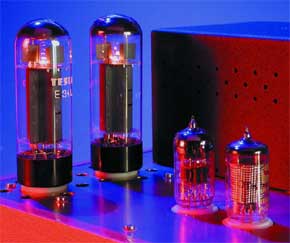Valve Final Amp (2)
printed circuit boards and construction

This is a MEMBER ONLY article. You need a subscription to read this article.
- Unlimited access to online Member Only articles
- 3 new editions Elektor Magazine (digital)
- More than 5000 Gerber files
- 20% member discount on e-books (at elektor.com)
- 10% member discount on Products (at elektor.com)
Available from €5.33 per month.
What is Members Only
Elektor is committed to providing high-quality content on electronics, catering to tens of thousands of paying members. As part of this commitment, Elektor has launched Premium, an initiative that offers exclusive online articles to members sometimes even before they appear in the magazine.
Every day, members can access in-depth articles that showcase the best of Elektor's premium content.
This initiative aims to reward members with early access. Once logged in, members can easily enjoy this exclusive content and engage in discussions about featured projects. While Premium adds to the existing resources available, Elektor will continue to provide a wealth of free information.
Join the Elektor community today to take advantage of Premium and other benefits!
Materials
Gerber file
CAM/CAD data for the PCB referred to in this article is available as a Gerber file. Elektor GREEN and GOLD members can exclusively download these files for free as part of their membership. Gerber files allow a PCB to be produced on an appropriate device available locally, or through an online PCB manufacturing service.
Elektor recommends the Elektor PCB Service service from its business partner Eurocircuits or AISLER as the best services for its own prototypes and volume production.
The use of our Gerber files is provided under a modified Creative Commons license. Creative Commons offers authors, scientists, educators and other creatives the freedom to handle their copyright in a more free way without losing their ownership.
Component list
Resistors:
All fixed resistors: metal film, Beyschlag type MBE0414 or BC Components type PR-02, dim. 4x12 mm.
R1,R2,R11 = 1M?
R3 = 4k?7
R4,R17,R18 = 47k?
R5 = 390?
R6,R22,R28,R29 = 100?
R7 (LS = 8?) = 3k?3
R7 (LS = 4?) = 2k?2
R8 = 27k?
R9 = 100k?
R10,R26,R27,R30 = 1k?
R12,R14 = 150k?
R13 = 82k
R15 = 15k?
R16,R19 = 390k?
R20,R21 = 2k?2
R23 = 10k?
R24,R25 = 10?
P1 = 50k? preset
P2 = 10 k preset
P3 = 20 k preset
(All presets: Bourns type 3386P)
Capacitors:
All film capacitors: Wima type MKS4, unless indicated otherwise.
C1 = 470nF 100V, lead pitch 15mm
C2 = 100nF 400 V, lead pitch 15mm
C3 = 10µF 350V or 450V, axial, dim. 12x25 mm
C4 = 100pF 630V, polypropylene, dim. 5x11 mm
C5 (for LS 8?) = 680pF 630V, polypropylene, dim. 5.5x15 mm
C5 (for LS 4?) = 1000pF 630V, polypropylene, dim. 5.5x15 mm
C6,C12,C13 = 220nF 250V, lead pitch 15mm
C7,C14 = 470nF 630V, lead pitch 27.5 mm
C8 = 10µF 450V, axial, dim. 15x30 mm
C9,C10 = 100nF 630V, lead pitch 22.5 mm
C11 = 470µF 63V, radial, dim. 12.5x25 mm
Semiconductors:
D1 = 200 V 1.3 W zener diode
Valves:
V1 = EF86 (US: 6267)
V2 = ECC83 (US: 12AX7)
V3,V4 = EL34 (US: 6CA7), matched
Miscellaneous:
2 noval (9-way) valve sockets, ceramic
2 octal (8-way) valve sockets, ceramic
Tr1 = output transformer, Lundahl type LL1620 P-P
PCB, order code 020071-1
Power supply
Resistors:
R1,R2 = 47k? (Beyschlag type MBE0414 or BC Components type PR-02, dim. 4x12 mm)
Capacitors:
C1-C4 = 100nF 400V, lead pitch 15 mm
C5-C8 = 100 n/1000 V, lead pitch 22.5 mm
C9 = 470µF 63V, radial, lead pitch 5 mm, dim. 12.5x25 mm
C10,C11 = 470µF 400V, radial, lead pitch 10 mm (e.g., Roederstein series EYS)
C12 = 100nF 630V, lead pitch 22.5 mm
Semiconductors:
D1-D4,D9,D10 = 1N4007
D5-D8 = BYW96E
Miscellaneous:
Fuse, 315 mA (fast) with PCB mount holder
Mains transformer,



Discussion (0 comments)
Skalolaz 4 years ago
TheEditor 4 years ago